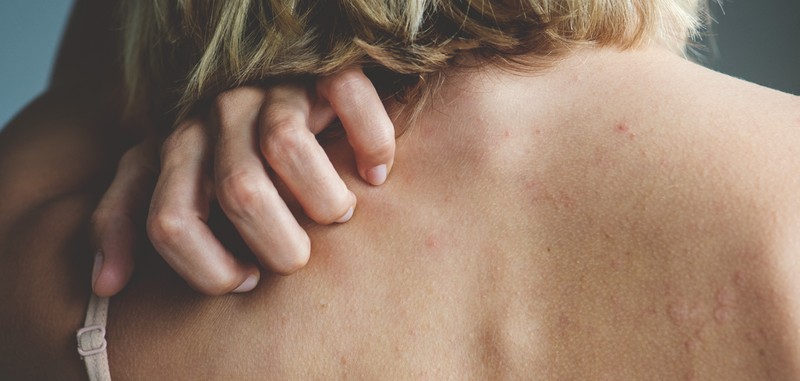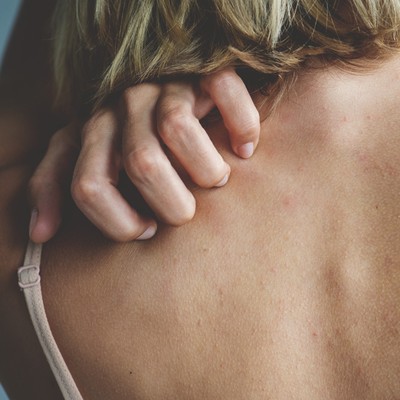

What You Need To Know About Histamine Intolerance
First – what exactly is histamine?
“You may be familiar with antihistamines, but histamine is an important chemical that’s crucial to the body’s functioning, especially the gut as it triggers the release of stomach acid to aid digestion. It supports the immune system, too. In fact, it’s released by the immune system when our body is trying to fight off foreign invaders such as allergens, bacteria and viruses. Histamine comes from two main sources: from mast cells within the body and from the food we eat.” – Pippa Campbell, functional nutrition & weight-loss practitioner
What happens when you are histamine intolerant?
“In the right amounts, histamine is vital to wellbeing, but when it doesn’t get excreted from the body and builds up, the resulting imbalance can be problematic – this is what’s known as histamine intolerance (HIT). For many sufferers it’s as though they’re in a constant state of inflammation. HIT is often likened to a bucket: as long as you can empty your histamine bucket regularly you won’t feel any ill effects, but if your bucket fills up and overflows, that’s when problems may arise.” – Emma Bardwell, nutritional therapist
How do you become intolerant?
“Aside from the histamine we naturally produce in our bodies, we also find histamine in certain foods and drinks. Often, very ‘healthy’ foods like avocados, spinach, tomatoes and fermented foods like sauerkraut and kefir contain large amounts of histamine. An added issue is that some people don’t have enough of the enzyme needed to break down histamine and clear it out the body. This is called diamine oxidase (DAO). DAO is produced in the wall of the intestine so gut health can play a big role in how much is produced. To make matters even more complex, certain foods and drinks – such as caffeine and wine – are DAO blockers and so prevent it from doing its job. The condition is also linked with mast cell activation syndrome (MCAS), which is when the immune system is tipped into an almost hyper-vigilant state. Mast cells almost become ‘trigger happy’, releasing too much histamine and other immune-response chemicals that can lead to brain fog, dizziness and chronic fatigue type symptoms. We think there might well be a crossover with some long Covid cases whereby mast cells have gone into overdrive and histamine is exceptionally high.” – Emma
What are the key symptoms?
“Symptoms often mimic allergic reactions and include itchy skin and eyes, sneezing, runny nose, a severe reaction to insect bites, facial flushing, eczema, migraines, low blood pressure, insomnia, anxiety, joint aches, cystitis and IBS – the list is long. Thankfully, most people don’t get all the symptoms – in fact, they may only get one or two – but they can still be very debilitating. Symptoms can also be unpredictable in that you might go for long periods with nothing and then suddenly have a flare-up, or they can be cyclical, sometimes in line with hormones and the menstrual cycle.” – Emma
Tell us more about the hormone connection…
“Many women find HIT becomes very pronounced when hormones are fluctuating. There are a few mechanisms at play, but the most significant is that oestrogen stimulates histamine, so if oestrogen is surging – highly possible if you’re perimenopausal – you may well feel the effects of histamine. Interestingly, histamine stimulates the ovaries to produce more oestrogen, so you can get a vicious circle effect. On top of that, oestrogen down-regulates production of DAO. And progesterone (which is often the first hormone to tail off during perimenopause) upregulates DAO. Stress can also trigger the release of histamine, and perimenopause falls at a very stressful time in a woman’s life, so this can create the perfect storm.” – Emma
Can HRT exacerbate the condition?
“Yes – the oestrogen component of HRT can cause symptoms to worsen. Some women find they need to come off HRT until they’ve sorted their histamine intolerance, although this is very individual and not the case for every woman.” – Emma
How is it diagnosed?
“HIT is not an easy condition to diagnose as it presents with similar symptoms to so many other conditions. It’s important to find a doctor or healthcare professional with experience and an understanding of the condition – the problem is these people are few and far between. It’s believed HIT affects 1-3% of the population but it’s likely to be much higher as it’s such an under-recognised condition. Many women complain they’ve been made to feel like it’s in their head or it’s ‘just an allergy’ and something they need to live with by doctors. The symptoms are so wide ranging that of course it can be difficult for GPs to detect and, like menopause, it’s not something that’s routinely taught in much detail at medical school. Histamine intolerance tests are notoriously unreliable. If you wanted to see if you had the genetic variant that makes you more susceptible to histamine intolerance, DNA tests are available. Failing that, the best way to work out whether you have a HIT is to minimise your histamine load for three to four weeks and see if symptoms improve.” – Emma
What treatment is available?
“Working with a medical professional who understands HIT is essential. From a nutrition standpoint, it’s important to create a personalised plan. The internet is awash with long lists of foods to avoid but in reality everyone’s list is different and everyone has different triggers. A low histamine diet taken from the internet can feel extremely restrictive and has pushed many women to the brink. I support HIT through diet analysis, working on the gut microbiome, pinpointing potentially triggering medications (things like ibuprofen can reduce your ability to break down histamine) and adding in supplements where necessary. For example, vitamin C can act as a natural anti-histamine. Asparagus, red onions and watercress can be very beneficial at moderating histamine.” – Emma
How can your diet help?
“Removing high-histamine foods is a simple and straightforward way to lower your histamine overload. In general, histamine levels rise in foods as they ripen or age, so it’s important to eat foods which are as fresh as possible. The foods that contain high histamine levels are also ones that have been altered through preservation or processing, such as smoked or dried fish, including fresh or canned tuna, sardines and mackerel; cured or smoked meat like pork products and other processed meats; dried fruit; fermented products like tempeh, yoghurt, kefir, alcohol, vinegar and soy sauce; blue cheese; coconut yoghurt; leftovers older than 48 hours; bone broth; and coffee. Foods to eat more of include fresh meat and fish, non-citrus fruits, eggs, gluten-free grains (including rice), dairy substitutes, and fresh vegetables except tomatoes, avocados, spinach and aubergine.” – Deirdre Nazareth, functional medicine doctor at Functional Medicine Associates
Is there anything else that can help?
“Try to avoid long-term use of antihistamine medications as these don’t actually remove histamine – they just block the receptors. The body will actually pump out more histamine as it will be tricked into thinking it’s not making enough. Eat plenty of histamine-lowering foods such as fresh herbs, herbal teas, brassica vegetables, apples, blueberries, cherries, rocket and mango. Stress management also plays a role as does mindful eating, and consider doing gentle movement such as walking, swimming, yoga or Pilates to aid lymphatic flow and detoxification. Intense exercise can produce more histamine and aggravate an already high histamine level.” – Deirdre
“Those who are histamine intolerant need help digesting protein (so it doesn’t linger fermenting in the gut, where it produces bacteria and histamine). Consider taking digestive enzymes if you suspect a histamine intolerance – these can support digestion, assist the absorption of minerals such as magnesium and calcium, and prevent bacteria from food entering the digestive tract.” – Pippa
For more information, visit Functional-Medicine.Associates, EmmaBardwell.com & PippaCampbellHealth.com
DISCLAIMER: Features published by SheerLuxe are not intended to treat, diagnose, cure or prevent any disease. Always seek the advice of your GP or another qualified healthcare provider for any questions you have regarding a medical condition, and before undertaking any diet, exercise or other health-related programme.
DISCLAIMER: We endeavour to always credit the correct original source of every image we use. If you think a credit may be incorrect, please contact us at info@sheerluxe.com.

